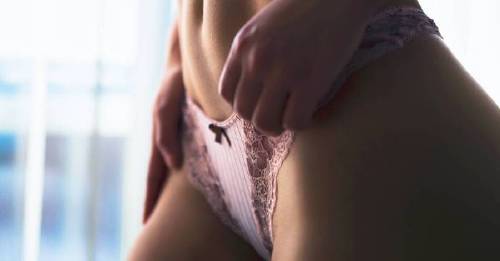We called upon expert in the field, Professor Whiteley, director of the Whiteley Clinic, to find out everything you need to know about the common condition.
Turns out, 50% of women in the UK experience varicose veins in their lifetimes. So, er, what exactly are they? What makes them different from spider veins and thread veins?
Are they dangerous to overall health? And what are the different treatment options?
WHAT ARE VARICOSE VEINS?
Not to be confused with spider and thread veins, which are small, dilated blood vessels near the skin surface, varicose veins are larger, lumpy blue or purple veins that can often present as bulging at the skin’s surface. “In their simplest form, varicose veins can be identified as bulging veins which protrude from the legs however, shockingly up to half of all varicose veins sufferers will show no overt signs of the condition, as the problematic veins remain hidden under the skin,” says Professor Whiteley.
“Varicose veins occur when valves in our leg veins stop working properly, meaning the blood falls down the veins when standing up, rather than flowing upwards towards the heart.”
WHAT CAUSES THEM?
“There is a stereotype that it is only the old and the overweight who will suffer from varicose veins. Contrary to popular belief; the condition is familial and can strike at any time of life – although it does become more common with passing years,” says Professor Whiteley. While the direct causes aren’t fully understood, there are a number of factors that can contribute to your risk, including genetics, weigh and whether you have a job that requires you to stand for long periods of time.

Professor Whiteley goes on to warn that up to 89% of people who believe they are suffering from harmless thread veins on the surface of their skin are actually displaying signs of these hidden varicose veins; “Many people will ignore these veins as they assume they are purely a ‘cosmetic condition’, and will often seek simple removal of these thread or spider veins. However, if the underlying hidden varicose veins have not been found and treated first, then thread or spider vein treatments are much less likely to work.”
HOW ARE VARICOSE VEINS TREATED?
“There are a number of cutting-edge endovenous techniques available for treating varicose veins both quickly and effectively – we have come a long way since the outdated technique of stripping,” assures Professor Whiteley.
A few of the treatment options include SONOVEIN EVLA (endovenous laser ablation), which is the first ever non-invasive treatment using high precision echotherapy. “It is a medical breakthrough which will completely alter the way we treat varicose veins and venous issues in the UK – and all over the world – in the years to come, whilst also transforming treatment experience and recovery times for patients,” says Professor Whiteley of the treatment.
There’s also microwave ablation, which uses heat to destroy the varicose veins permanently. “The treatment targets water, and so does not require contact with the vein wall – offering the same advantages as Laser Ablation. However, because there is no laser light involved, surgeons do not require special rooms, regulations or eye protection to carry it out.”
Older techniques, but nonetheless effective, are slightly more complicated. EVLA (ENDOVENOUS LASER ABLATION) uses local anaesthetic and ultrasound to place a needle in the vein near the knee or ankle. “A wire is then passed into the vein and a long ‘sheath’ is passed up the vein to the top and local anaesthetic is injected around the vein,” explains Professor Whiteley. “Once the anaesthetic is in place, the laser fibre is passed up inside the sheath until it comes out of the top. The fibre is fixed to the sheath and the laser is switched on. The sheath and laser are then pulled back at an exact rate, making sure the vein is completely destroyed – but without damaging the surrounding tissues.” Easy.
There’s also the Venaseal or “superglue” treatment available, which is a relatively new way of closing the main vein in the leg that causes varicose veins. “When Venaseal is performed, only one needle hole is needed per vein treated so there is no need for the additional injections of local anaesthetic around the vein – unlike endovenous laser ablation or radiofrequency ablation. Not every patient is suitable for the Venaseal treatment so it’s important that a duplex ultrasound scan is carried out to assess suitability,” says the professor.
While there are lots of options available, many lack the expertise and understanding of the condition, which can lead to misdiagnosis and inappropriate treatment. “Unfortunately, many health professionals are unaware of the existence of these newer, more effective treatments and how to use them to their best advantage, which is why it is always really important to go and see a veins specialist who deals with venous conditions day in day out.”
WHAT’S THE RECOVERY TIME?
Depending on your individual case and treatment option, you’ll be required to wear bandages and compression stockings for up to two weeks after the procedure. It’s vital that these aren’t removed, even for a split second, as even a short time would allow the blood to flow back into the treated areas (don’t worry – the stockings have a popper flap around the groin for weeing and other things).



